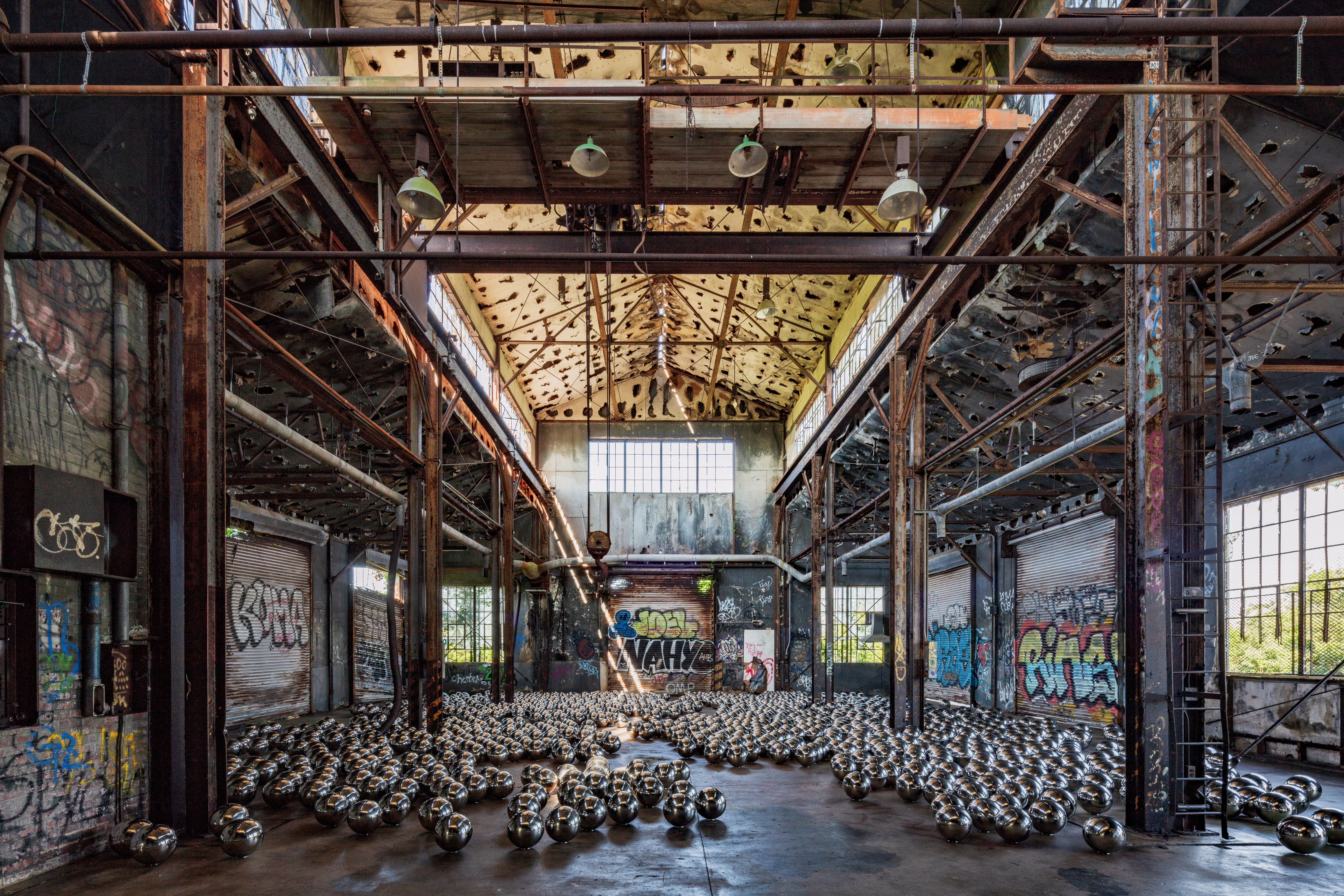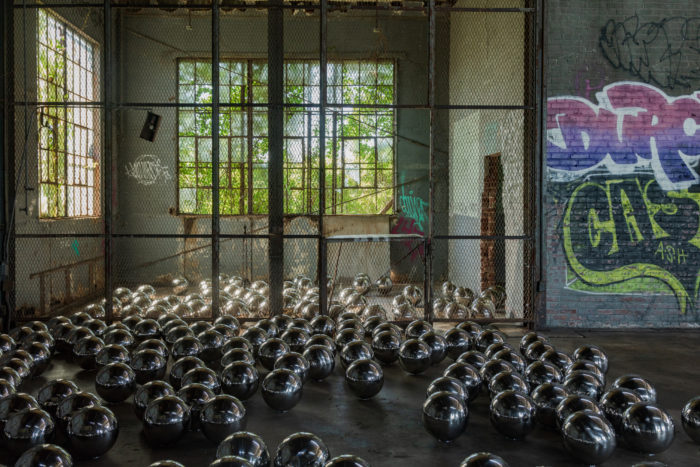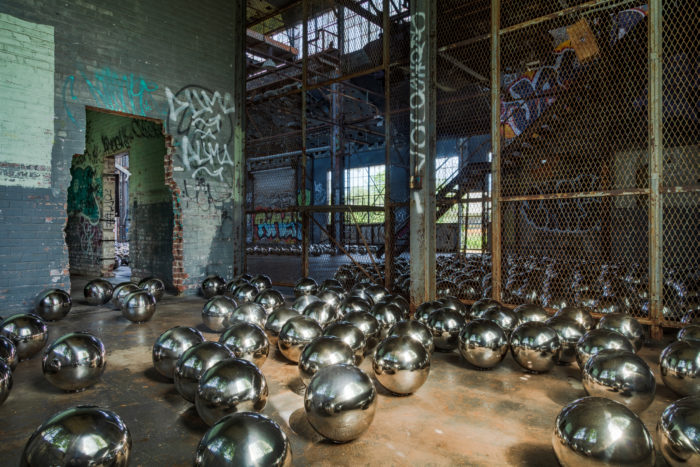
If anyone can draw attention to an area in need of recognition, it is Yayoi Kusama. This summer, the iconic artist will bring her site-specific installation, Narcissus Garden to the Rockaways in the third iteration of Rockaway!, a free public art festival dedicated to the ongoing environmental restoration of the area.
A fixture in the art world since the 1960s, Kusama’s fame and reach has grown exponentially in recent years as her Instagram-friendly exhibitions draw in crowds from all corners of the Earth. Though each of Kusama’s installations are layered in meaning, Narcissus Garden, has a rich history that finds just as much relevance in this newest rendition as it did when it was first presented in 1966. Kusama’s initial showing of the work, made of 1,500 mirrored, stainless-steel spheres, occurred at the 33rd Venice Biennale. Though the artist was not invited to show her work at the lauded showcase, that did not stop her from staging a presentation on the lawn outside of the Italian Pavilion. In an act of self-promotion and as a critique of the commercialization of contemporary art, Kusama herself walked amongst the spheres, tossing them in the air, and offering them to visitors for approximately $2, before being removed from the Biennale.

This moment would come to symbolize the beginning of Kusama’s active participation in radical, politically-charged performances that were the focus of her career in late 1960s New York City. Nearly 50 years later, Kusama’s work has once again found its way into the DNA of New York with Narcissus Garden.
Formerly a train garage when Fort Tilden was an active military base, the space in which Narcissus Garden is set draws parallels to Kusama’s anti-war protests of the 1960s. The artist’s activism has transcended generations. With this piece, Kusama hopes to bring awareness to our current war against the environment. The Rockaways have seen increased damage caused by global warming’s effects, beginning with Hurricane Sandy nearly 6 years ago and growing worse each year.
Narcissus Garden challenges the viewer to see themselves within the spaces they occupy. Surrounded by mirror balls, the viewer is confronted by their own infinite reflection and that of the surrounding environment. The effect is psychological–a surreal chill that sweeps over the body.

The work can be read as having numerous meanings of commercialization. In an age where the real-life experience of viewing art is often overshadowed by the need to capture the perfect photo for Instagram, Kusama embraces rather than condemns. By placing the work in this particular location, Kusama asks the viewer to look beyond themselves, to take in the decrepit state of the building and the eroding beaches nearby.
As with much of her oeuvre, Kusama uses Narcissus Garden to take the viewer out of their body, out of their particular location in the world and bring them into view of something bigger. As one reflects on their own image, they are also meant to reflect on their actions, both in this space and everywhere else. Her message remains the same as it was 50 years ago – a call for social change. Perhaps it will take such a groundbreaking, loved and followed artist to wake us up to the reality of environmental catastrophe, both in the Rockaways and around the world.
Narcissus Garden will be on view at the Gateway National Recreation Area at Fort Tilden, New York from July 1 – September 3.










 in your life?
in your life?

